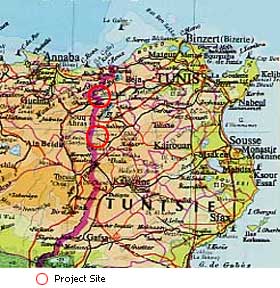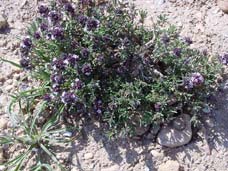|
Tunisia:
In Tunisia, a high number of medicinal plants have been identified, some of which are threatened of extinction.
The project site in Tunisia is in the area of Rhim, near Ghardimaou, in the forested mountains of the northwest of Tunisia, near the Algerian border, due to its importance in terms of biodiversity in general, and medicinal plants in particular. A second site was chosen in Bouya Goum situated at the centre of the North Western region of Tunisia, next to the Saddine National Park.

In Tunisia, the theme of medicinal plants is part of a much vaster rural development project. The North Africa Biodiversity Programme in Tunisia was implemented by the Association Tunisienne pour la Protection de la Nature et de l'Environnement (ATPNE), one of the oldest NGOs in the country. The National Coordinator was Dr Mohamed Ali Abrougui.
A bibliographic analyses and a survey were organized with herbalists, users, rural populations and citizens to identify and locate medicinal plants in the country and elaborate a list of these plants with their traditional uses, status and ecology. The survey found 198 species of medicinal plants, and produced a total of 3088 descriptive sheets. The most commonly used plants were found to be: rosemary, lavender, absinthe, white artemisia, thyme, fennel, and Ajuga iva. Plant populations in the Bouya Goum area were also studied.

Seeds of a number of plants were bought and grown in nurseries then distributed to beneficiaries, in order to decrease collection of wild plants and give alternatives to populations. The species had been determined according to their status (rare or threatened with extinction) or to the fact that they were easily commercialised (lavender, sage, vervain). Training was provided to beneficiaries on cultivation of the plants and the creation of small nurseries, on cuttings to avoid losses, on distillation and drying of plants and on fabrication of soap from essential oils to valorise their product. Some women also received training on appropriate techniques for gathering medicinal plants from the wild. The diversification of agriculture with the incorporation of medicinal and aromatic plants was also promoted to improve revenues for local populations.
Public awareness activities were undertaken with regard to medicinal plants.
|


